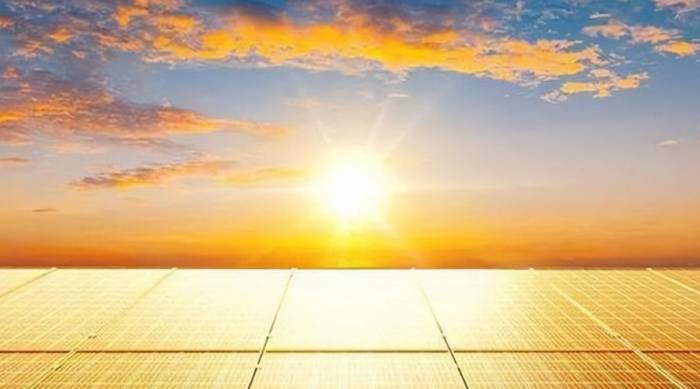Solar power generation has always been the star of clean energy, but low efficiency has always troubled large-scale applications. However, recently Lehigh University in the United States released a breakthrough research, they have developed a kind of magical new material that can actually increase the efficiency of solar energy conversion to 63%, which is 3-4 times that of the current solar panels on the market! What exactly is going on? Are we about to usher in a brand new era of energy?
[Event Process]
The matter is such that on April 10, 2024, the "Science Advances" magazine published an article, announcing that the research team of Lehigh University has developed a new thing called "Copper-doped Germanium Selenide/Tin Sulfide Heterostructure Composite Material". Although the name sounds awkward, its ability is not simple. The thickness of this material is only at the atomic level, don't look at it so thin, but it can increase the efficiency of converting sunlight into electricity to 63%. It is necessary to know that the efficiency of the best solar panels on the market is only between 15% and 20%, and this new material from Lehigh University has directly increased the power generation several times. Once this technology is commercialized, the global energy pattern may change as a result.
Advertisement
Looking back at this technical breakthrough, the most shocking thing is that this technology not only improves efficiency but also breaks the "Shockley-Queisser Limit" that is considered to be the theoretical limit of solar energy conversion. This theory was proposed by two Nobel Prize winners in physics in 1961, which means that under standard conditions, the highest efficiency of solar cells will not exceed 33.7%. However, the new material from Lehigh University has broken through this "ceiling".
So, how did this new material do it? The research team used a very clever method: they inserted some copper atoms into the van der Waals gap of the material, forming a new structure. In this way, this material not only has a stronger ability to absorb sunlight but also more effectively converts light energy into electrical energy, reducing energy waste.
This breakthrough is not only technically astonishing but also makes people start to think about its commercial application prospects. Assuming we replace the current solar panels with this new material, the global solar power generation will increase several times. In other words, in the future, it may only take a smaller area of solar panels to meet the current several times of electricity demand.
Speaking of this, everyone may think, how far is this technology from us? In fact, such technology needs to overcome many difficulties from the laboratory to the market, including cost, stability, mass production, and so on. Even so, the big guys in the energy field have already started to prepare to welcome this potential "game changer".
[Netizen Hot Review]One netizen commented, "Is this material really that magical? Don't let it end up being just another beautiful vision of scientists, there's still a long way to go before it can be mass-produced and put into practical use, right?"
Another netizen said, "If this can really be realized, then the solar panels on the roof of my house may be able to cover most of the electricity usage in the future, and even sell electricity to make money."
Someone joked, "I hope this material isn't too expensive, otherwise a solar panel could buy a house."
There are also skeptics: "It sounds quite mysterious, but there have been many so-called 'revolutionary breakthroughs' over the years, how many have really been commercialized? Let's just wait and see."

One netizen exclaimed, "If there really is an efficiency of 63%, then in the future we may not need to rely on fossil energy, and we can meet our needs just by relying on the sun!"
Another netizen was more rational: "From the laboratory to practical application, this transformation process is full of challenges. After all, there is still a big gap between experimental data and actual mass production data."
There is also a netizen who joked, "The name of this material is so complicated, it feels like it's telling us that ordinary people don't want to DIY solar power generation."
Some people have paid attention to environmental protection issues: "If this technology is popularized, it will definitely be great news for environmental protection. As long as the cost can be reduced, it should be promoted."
One netizen expressed concern: "Will such high efficiency lead to an increase in the heat generation of solar panels? Will there be new technical problems?"Some netizens have expressed their eager anticipation: "Hurry up with mass production, and install it on my roof as soon as possible! This way, I won't have to worry about electricity bills, and I might even be able to sell electricity to make money."
Others reflect on the energy landscape: "If this really becomes popular, will traditional energy companies go bankrupt as a result? The global energy landscape may need to be reshuffled."
One netizen said pragmatically: "It sounds impressive, but what we ordinary people care about most is when can we use it? Will it be very expensive?"
From the reactions of netizens, it can be seen that everyone is full of expectations and questions about this new technology. Although the breakthrough from Lehigh University is astonishing, whether it can eventually enter thousands of households still needs to be tested by time. Regardless, the advancement of technology always brings us infinite possibilities.
What do you think about this, dear readers? Welcome everyone to leave a message in the comment area for discussion.
Leave a Comment